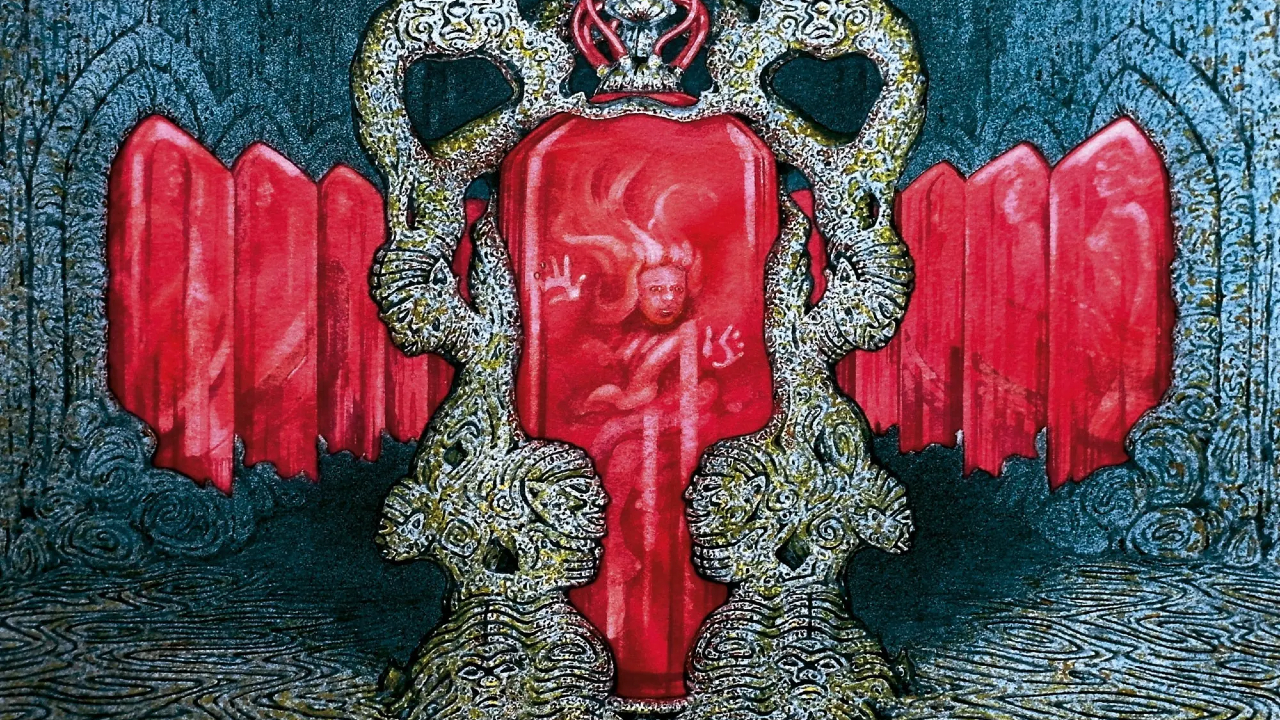“When are we going to stop with this Pink Floyd stuff and start playing some metal?”: The story of the most ambitious song in death metal history
In 1996, Sweden’s Edge Of Sanity filled an entire album with one winding track, inspired by black metal, melodeath, prog and plenty more. It remains a towering achievement long after the band’s break-up.

It all started with one riff. In a recent interview, former Edge Of Sanity mainman Dan Swanö said that the sessions for his band’s fifth album, Crimson, began with him wanting to get more out of a blink-and-you’ll-miss-it guitar part he’d used in his goth rock project Nightingale. From those humble origins came a masterpiece: a 40-minute, one-song labyrinth that remains a benchmark for progressive death metal – even if it never quite found the mass adulation it deserved.
For those who don’t know, Edge Of Sanity were formed in 1989 by singer, guitarist and future multi-instrumentalist Swanö, plus co-guitarist Andreas Axelsson. The two would remain the outfit’s key tandem for much of the time between their founding and their 2003 disbanding, but that stability belies the musical experimenting they did. After kicking off as a straight-ahead death metal act, they pulled influence from the developing prog metal, black metal and melodeath movements: sounds Swanö engaged with by producing Katatonia, Dark Funeral and more in the early-to-mid 90s.
When it first came out in April 1996, Crimson marked the apex of Edge Of Sanity’s ambition. Swanö had the year prior produced Orchid, the debut album from Swedish prog-death icons Opeth, and was wowed by their canon of Rime Of The Ancient Mariner-scale epics.
“I was so blown away that I barely knew my own name,” he later remembered, “and I wanted to do something that was quite similar.”
Writing for Crimson also consisted of improvised jams with all five Edge Of Sanity members present – a stark change from their usual modus operandi of Swanö composing in isolation. As a result, from the one riff Swanö had in his back-pocket, Crimson naturally grew and grew. The band leader at one point toyed with going down a full, unfettered and “vibey” prog metal direction, before Axelsson pulled him back to reason. “When are we going to stop with this Pink Floyd stuff and start playing some death metal?” he asked.
That push-and-pull is audible throughout Crimson. The winding odyssey’s opening minutes establish the extremes, darting from bullheaded oomph, spearheaded by Swanö’s screams, to ominous, proggy arpeggios. From there, the album is the sound of a band unchained.
As Swanö says: “We were all so thankful that we didn’t have to write 10 choruses, 10 cool intros and 10 cool verses and find 10 cool titles. We just had that one piece, and anything goes! You could go from a blast beat part with black metal vocals and straight into a doom part with the deepest vocals ever and just be extremely adventurous.”
Sign up below to get the latest from Metal Hammer, plus exclusive special offers, direct to your inbox!
Yet, Edge Of Sanity also had the restraint to include melodies and motifs that stopped them from veering off the deep end. Amid Crimson’s gallop of genre-splicing pieces, they revisited pivotal riffs, while Swanö’s spotless production and the band’s already ambitious back-catalogue made even the boldest tangents still feel somewhat logical. The sense of grandeur was hoisted even higher by Opeth singer/screamer Mikael Åkerfeldt, who leant every shade of his voice to the album, as well as some lead guitar licks.
Upon release, Crimson was hailed by many fans as Edge Of Sanity’s defining achievement, but its status as a one-song opus offered little in the way of broader appeal. Also, the band imploded within months of it coming out: Swanö left Edge Of Sanity in 1997, then they broke up, then they came back to make Crimson II before once more disappearing just as quickly. As a result, where the similarly avant-garde likes of Opeth won their audiences through decades of craft, these forward-thinkers sadly fell by the wayside, despite how intensely they’ve been clung to by their cult audience.
In a just world, Crimson would be one of the first things that comes to mind when your average metalhead thinks “death metal masterpiece” – up there with the likes of Blackwater Park, Altars Of Madness and Heartwork. But we do not live in a just world. Until we do, those who know get to treasure a defining, essential statement that makes 40 minutes feel like less than half the time.
A remix of Crimson came out on June 6 via Century Media.

Louder’s resident Gojira obsessive was still at uni when he joined the team in 2017. Since then, Matt’s become a regular in Metal Hammer and Prog, at his happiest when interviewing the most forward-thinking artists heavy music can muster. He’s got bylines in The Guardian, The Telegraph, The Independent, NME and many others, too. When he’s not writing, you’ll probably find him skydiving, scuba diving or coasteering.
